Results 41 to 50 of 56
Thread: How to tell Bone from Ivory?
-
03-05-2013, 02:26 AM #41

 One time, in band camp, I shaved with a Gold Dollar razor.
One time, in band camp, I shaved with a Gold Dollar razor.
-
03-05-2013, 02:40 AM #42aka shooter74743




- Join Date
- Sep 2009
- Location
- SE Oklahoma/NE Texas
- Posts
- 7,285
- Blog Entries
- 4
Thanked: 1936
Nice razor my friend
Southeastern Oklahoma/Northeastern Texas helper. Please don't hesitate to contact me.
Thank you and God Bless, Scott
-
03-05-2013, 06:00 PM #43

This is the razor mentioned by pixelfixed earlier. The photo is from the owner. It shows the detail in the ivory scale pretty well.
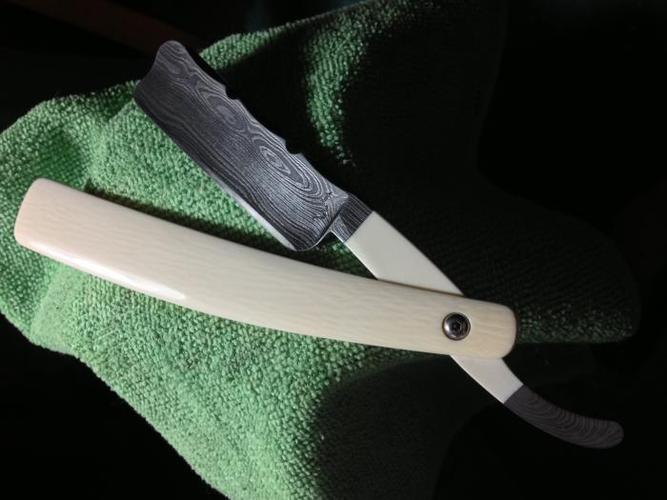
-
The Following User Says Thank You to Tim Zowada For This Useful Post:
pixelfixed (03-05-2013)
-
03-05-2013, 06:47 PM #44Senior Member



- Join Date
- Apr 2008
- Location
- Essex, UK
- Posts
- 3,816
Thanked: 3164
Some more (vintage) ivory scaled razors to show a bit of variation in the markings:
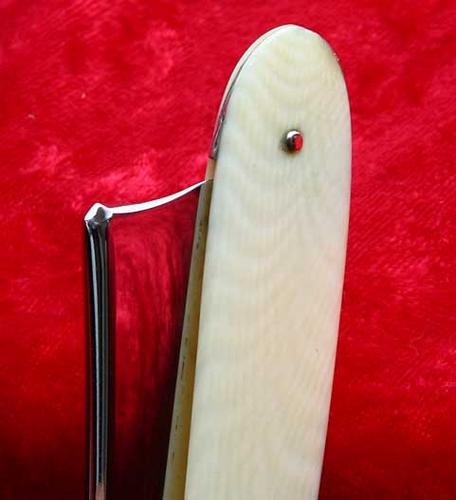
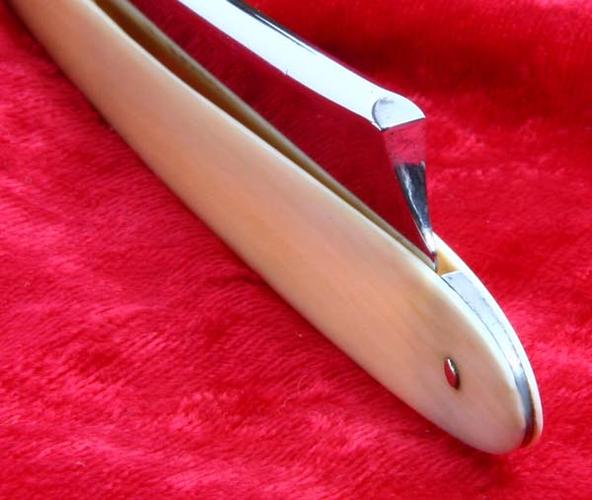
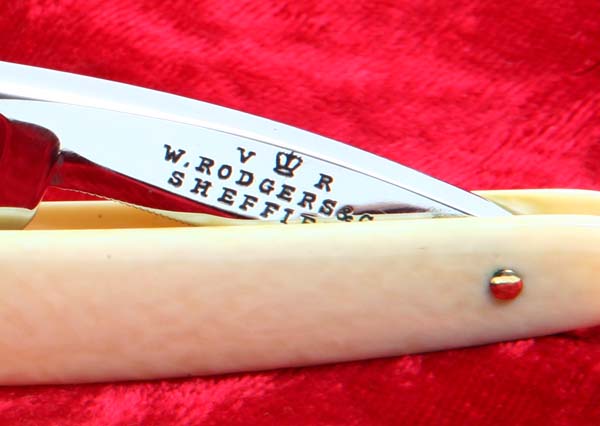
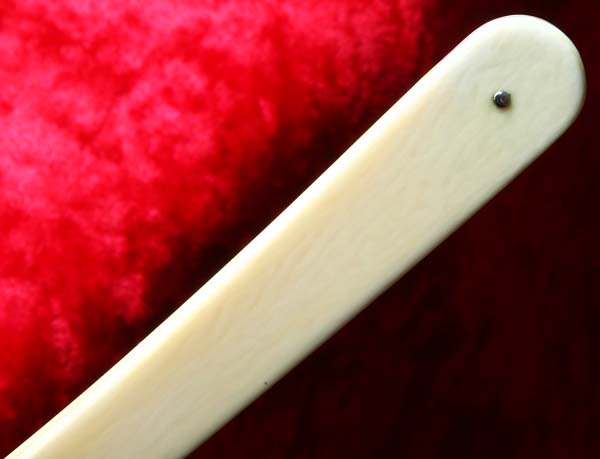

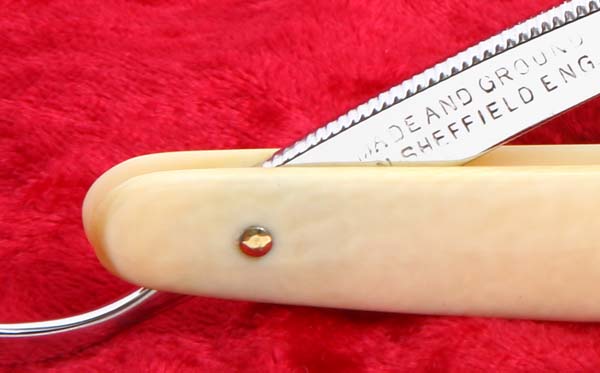
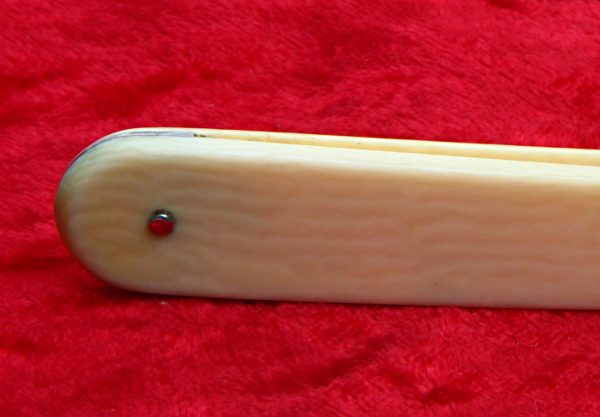
Some have hardly any striations at all. In one, the lighter mottlings were almost see-through. I think the patterning depends on how close to the inside core the of the tusk the scale comes from.
Regards,
Neil
-
The Following User Says Thank You to Neil Miller For This Useful Post:
Steel (09-30-2014)
-
03-05-2013, 06:52 PM #45Senior Member


- Join Date
- Jan 2011
- Location
- Roseville,Kali
- Posts
- 10,432
Thanked: 2027
Actually the intense patterns are from the outermost section of the tusk,The lines only go about 1/2 deep,after that the are gone.
See if I can find a pic.
-
03-05-2013, 06:58 PM #46Senior Member


- Join Date
- Jan 2011
- Location
- Roseville,Kali
- Posts
- 10,432
Thanked: 2027
The sheregar Lines are where the striations come from,toward the center of the tusk they disapear.

-
The Following User Says Thank You to pixelfixed For This Useful Post:
Voidmonster (03-05-2013)
-
03-05-2013, 07:17 PM #47Senior Member



- Join Date
- Apr 2008
- Location
- Essex, UK
- Posts
- 3,816
Thanked: 3164
From what I have read, there are inner clusters of shreger lines, too, though less pronounced than those at the outer edges and at a different angle. I suppose the pattern you get really depends on how the tusk is converted. Perhaps there is a similarity to how timber is converted into planks - it woul not be cost-efficient to just cross-saw right through the timber, so quarter-sawing is used too - quarter-sawn oak is very nicely figured, if I recall correctly, but the pattern is hidden in other saw cuts.
A diagram I saw of a log had four sections of planking sawn out, making out the shape of a cross, then the saw was turned at 45 degrees and the quarter-sawn planks were taken - these, unlike the cross sections, were of variable width, of course.
An old Sheffiled booklet where an American visits the ivory room tells us that in all there where eight qualities of ivory taken from each tusk, the yellowish ivory nearer the core being the most valuable.
Regards,
NeilLast edited by Neil Miller; 03-05-2013 at 07:19 PM.
-
The Following User Says Thank You to Neil Miller For This Useful Post:
Voidmonster (03-05-2013)
-
03-05-2013, 07:17 PM #48
-
03-05-2013, 07:22 PM #49Senior Member


- Join Date
- Jan 2011
- Location
- Roseville,Kali
- Posts
- 10,432
Thanked: 2027
-
03-05-2013, 07:34 PM #50Senior Member



- Join Date
- Apr 2008
- Location
- Essex, UK
- Posts
- 3,816
Thanked: 3164
These elephant tusks certainly look like they contain figuration right down to the centre:

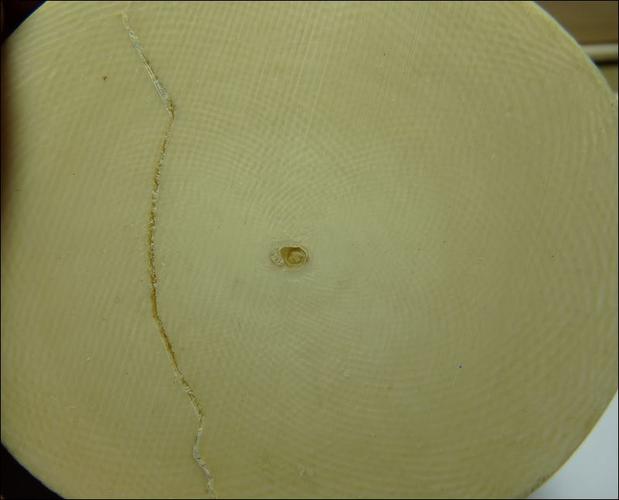
The area below the shreger lines is referred to as The Lines of Owen, so I suppose that in some examples that is patterned too.
Regards,
Neil
-


 68Likes
68Likes LinkBack URL
LinkBack URL About LinkBacks
About LinkBacks






 Reply With Quote
Reply With Quote
